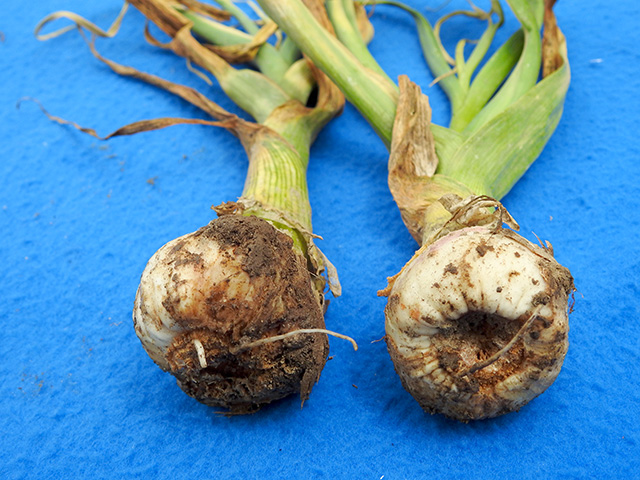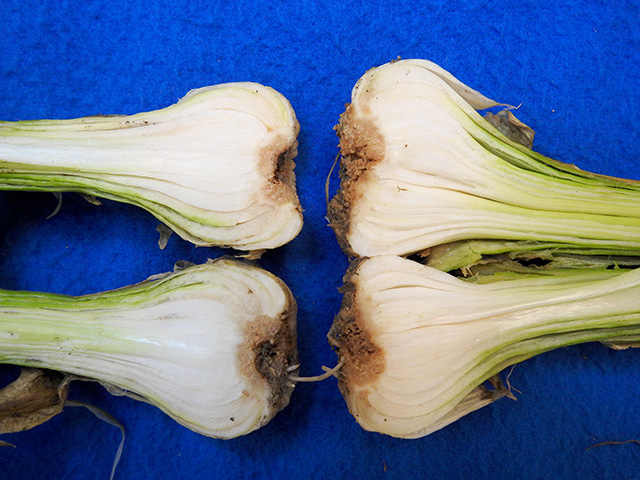Updated July 2023
Bloat (aka stem and bulb) nematode was confirmed on garlic four times on Long Island between 2010 and 2016. This nematode (Ditylenchus dipsaci) occurs where contaminated cloves were planted. It can survive in soil for at least 4 years. Dry soil favors survival.
Above ground symptom is yellowing of foliage and plant stunting, which has been noticed in late spring. Twisting of foliage can also occur. These symptoms are due to the nematode feeding on roots. All roots may be gone. Rot often doesn’t extend far into the bulb unless other organisms, in particular soft rot bacteria, are present.
The most important management practice is planting cloves from bulbs tested and found to be free of bloat nematode. The Cornell Plant Disease Diagnostic Clinic processes bloat nematode samples for growers and hobbyists. See their webpage for sample submission forms, fees, and mailing information. Samples can be dropped off; it is recommended to provide a time in advance by calling or emailing.
Where the disease has occurred, do not plant garlic or other susceptible crops, which include onion, chives, and leeks, for at least 5 years. This pathogen exists as biological races with different host ranges.






